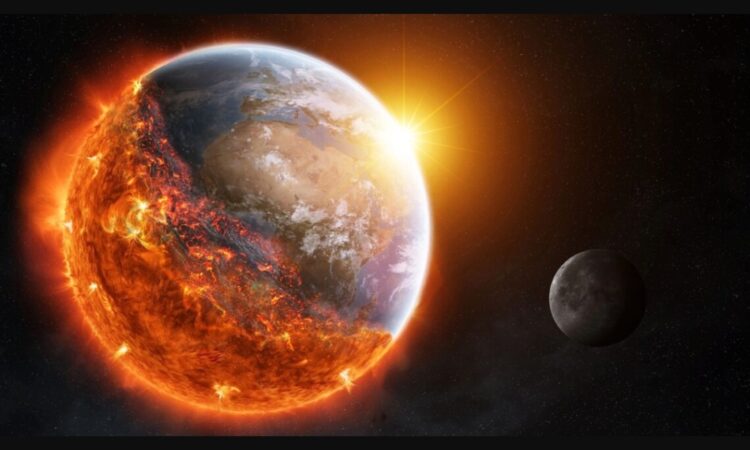
Albert Einstein once made a prediction about when the world might end, and now NASA is bringing attention to some developments that make people think about whether he might have been right.
Scientists recently observed something strange with Voyager 1, a spacecraft launched decades ago. It started acting differently, something it hasn’t done since the 1980s. At the same time, scientists have discovered a bizarre concept called “negative time,” where time might actually move from the future to the past — something never seen before.
All of this has reignited interest in a big question: how long can humans survive on Earth? People have always wondered about the end of the world, with ancient cultures like the Mayans trying to predict it. Today, instead of relying on myths, scientists study real threats to our planet. Experts, including the late physicist Stephen Hawking and NASA scientists, have warned that problems like climate change and running out of natural resources are serious risks for our future.
Stephen Hawking, one of the world’s most famous thinkers, believed that Earth could become uninhabitable by the year 2600. He imagined a future where Earth might look like a ball of fire due to extreme global warming. His fear came from observing how much damage humans are causing to the planet — rising temperatures, melting ice caps, and extreme weather patterns. He warned that if we don’t manage our environment properly, the Earth could turn into a lifeless desert. He believed humans were using up the planet’s resources far too quickly and recklessly.
NASA agrees with many of Hawking’s concerns. While they don’t give a specific year like 2600, they warn that if we continue to abuse natural resources, we may push the Earth to a breaking point. Things like drilling for oil, cutting down forests, and polluting air and water are making the planet weaker. To slow this down, NASA is working on programs to monitor the climate and encourage actions that reduce human damage.
NASA also looks beyond Earth for threats, such as asteroids that could strike the planet. They have a special team called the Planetary Defense Coordination Office that tracks space objects and tries to protect Earth from possible collisions. At the same time, NASA watches how Earth’s atmosphere, oceans, and ice are changing, gathering information to help slow down global warming.
Both Stephen Hawking and NASA are sounding the alarm. They say we don’t have time to waste. Hawking warned about what could happen if we ignore the signs. NASA is working on what can be done to prevent that future. The message is clear: if humanity wants to keep living on Earth, we have to act now.
We must focus on keeping the environment healthy, slowing climate change, and protecting wildlife and ecosystems. The Earth’s future depends on the choices people make today. If we keep going the way we are, we risk losing the world we know. But if we work together to fix the damage, there’s still hope. Science is giving us a clear warning — now it’s up to us to listen and do something before it’s too late.




